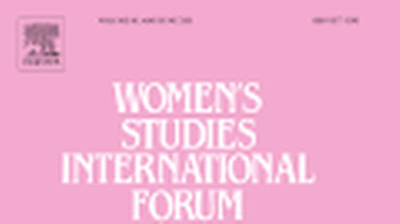Acting jointly on behalf of women? The cross-party women’s caucus in Malawi
How to cite this publication:
Asiyati Chiweza, Vibeke Wang, Ann Maganga (2016). Acting jointly on behalf of women? The cross-party women’s caucus in Malawi. Bergen: Chr. Michelsen Institute (CMI Brief 8)
Despite an increase in the number of countries that have adopted women’s caucuses in sub-Saharan Africa, there is still little empirical knowledge about how they operate and under which conditions they are most effective in achieving pro-women legislation. This brief explores the role of the Malawian cross-party parliamentary women’s caucus in enacting women friendly legislation under varying circumstances, from its inception in 1996 until 2014. The caucus has been most effective when the members have been able to act in unison and work closely with external actors. Yet the role of the caucus in ensuring substantive outcomes is not indispensable and may be circumvented by the combined actions of women’s organizations, donors and individual key actors in parliament.

Authors:
Asiyati Chiweza
Associate Professor, Department of Political and Administrative Studies, Chancellor College,
University of Malawi
Vibeke Wang
Postdoctoral researcher,
Chr. Michelsen Institute
Ann Maganga
Consultant, UN Women Malawi and PhD student, Chancellor College, University of Malawi
Women’s parliamentary caucuses are still a quite recent phenomenon; the bulk of them were formed in the first decade of the 2000s. While women still constitute a minority in nearly all national parliaments in the world and thus may not have their interests sufficiently represented, there is an assumption in the literature that women’s caucuses are conducive to women’s substantive (‘acting for’) representation. Women’s parliamentary caucuses may create space for women members of parliament (MPs) to coalesce and work together to promote issues of concern to women (Archenti and Johnson 2006).
The analysis mainly draws on interview data with a total of 49 key informants including MPs, donors, women’s organizations, civil servants, and academics from January 2014 to January 2015.
Caucusing and relational resources
We define parliamentary caucuses as “stable, public allegiances identifiable to members and non-members” (Piscopo 2014:9). They may be formal or informal and undertake multiple activities ranging from policy advocacy to networking and capacity-building activities. Women’s parliamentary caucuses are typically constituted to bring female legislators together, across party lines, in effective alliances around a common goal.
Participation in women’s parliamentary caucuses and the cooperation with women’s activists in civil society, are crucial for pro-women achievements in the legislature (Bauer 2012; Geisler 2004; Wang 2013). Studies from South America confirm that women caucuses are critical for achieving substantive representation by providing space for inter-party dialogue and promoting unity and collective action on women’s issues.
Women’s Caucus Emergence (1994–1999)
The origins of the organisation and activism role of the Malawi parliamentary cross-party women’s caucus can be traced back to 1996:
“At that time we were only nine MPs out of a total of 177 members. When we realised our minority status we made a decision that whenever there was anything to pass on women and children we should speak with one voice. We started informally. Parliament never recognized it [the women’s parliamentary caucus] and we made our own contributions, sometimes with assistance from the Ministry of Gender. It [the caucus] looked like a very informal thing, but in the end, it has grown (Interview with Lillian Patel, 14 August 2014).
From its inception, the caucus adopted an explicit women’s interest agenda aimed at advancing “the welfare and special interests of women, children and family life in society, under legislation and in the administrative policies of the government and other state bodies” (Government of Malawi 1996: 3). In practical terms, caucus members united around two common goals. First, to ensure harmonization of existing laws with women’s rights as enshrined in the 1994 Constitution. Second, to ensure that gender was mainstreamed into all legislation enacted by parliament (NDI 1998: 2, 4).
The women’s caucus worked closely with the Malawi Law Commission, the Women’s Commission in the Ministry of Women and Children’s Affairs, women activists, and some women academics, in order to analyse and revise legislation to eliminate discriminatory provisions. During the formative years, the ability of the caucus to coordinate and narrow down its focus and work with other actors outside Parliament enabled it to move forward with relative consensus. This was irrespective of the low number of female parliamentarians and the members’ political party allegiance. As a result, the women’s caucus emerged as a notable actor on the parliamentary scene (Semu 2002: 90, Young 2011: 240).
As a move towards strengthening caucus leverage in Parliament, members were conscious of the need to build alliances with male counterparts in Parliament. They were careful to frame their lobbying in a manner appealing to their male counterparts. They stressed the positive impact on the family and society as a whole of legal reforms, rather than just the importance to women (Semu 2002: 90). They also put efforts into reaching out to the public (NDI 1998: 4).
In the end, Parliament passed in 1997 an affiliation bill raising the minimum level of child support, and the Wills and Inheritance (Amendment) Bill was enacted in 1998 with an amendment criminalizing dispossessing surviving spouses and children (CEDAW 2004: 16). This was after fierce debate in parliament where male members ridiculed the amendment and the role of the caucus in presenting it (Semu 2002: 90). Yet, the amendment to the act was a considerable victory on the part of the caucus. It was its first real “win”.
Caucus Recognition and Emerging Conflicts (1999-2004)
The number of women elected to parliament rose from 9 to 17 in the 1999 elections, leading to a near doubling of the caucus membership, but caucus activities had a slow start due to intra-party conflicts over leadership positions and the fact that the opposition party Malawi Congress Party (MCP) had no representatives in the leadership.
During this period, the caucus’ agenda was closely linked to the work of the special Gender Commission within the Malawi Law Commission. The commission had a mandate to review all gender-related laws and ensure their compliance with the 1994 Constitution. Aside from working on these bills, the caucus lobbied to elevate its own status in parliament, and focussed on the rights of female employees. In 2000, Parliament passed the Employment Act, which prohibits discrimination on any grounds, including gender, and entitles female employees to eight weeks paid maternity leave. Although the bill was not part of the caucus’ original priority areas, the parliamentary women’s caucus played an important role in ensuring that the law took the rights of women into account.
The Southern African Development Community Parliamentary Forum launched a regional women’s parliamentary caucus in April 2002, to monitor political commitments on women’s participation and representation of member states, and this resulted in added impetus for the Malawian women MPs to push for formal recognition by the Malawian Parliament. Although the caucus fell short of being included in the parliamentary standing orders, it was formally recognized by parliament (Musukwa 2013: 6).
Caucus Activism in a Chaotic Parliamentary Setting (2004-2009)
Unlike in previous elections, the 2004 elections saw the proliferation of a number of political parties and a new political climate. The newly elected President Mutharika decided to abandon the United Democratic Front (UDF) once in office, and form his own political party, the Democratic Progressive Party (DPP). This effectively turned the UDF into an opposition party in parliament and created a chaotic and tense political environment, where the opposition-run parliament attempted to impeach the president (Muriaas 2013), and presented stiff resistance to all government bills.
The number of women in parliament increased to 27, but only six of them were re-elected from the 1999-2004 parliament. Caucus operations were constrained by party politics. Although draft laws on marriage, divorce and family relations, succession, and citizenship were debated in parliament (CEDAW 2006a: 2; CEDAW 2006b: 8), not much progress was made with respect to such laws in this parliamentary period.
Women’s rights organizations were better organized than ever at this time. Prior to the 2009 elections, the Gender Coordination Network launched the high profile and relatively successful 50/50 Campaign to enhance women's political representation, with the support of the women's ministry and donors (Muriaas and Kayuni 2013). The women's caucus was preoccupied with how to ensure that its members were re-elected, and engaged in the campaign accordingly.
In terms of pro-women legislation, the major accomplishment during this parliamentary period was the passage of the Prevention of Domestic Violence Act of 2006 (Young 2011: 239). Yet, the role of the women's caucus in passing the act was limited. The activism and engagement of women’s activists and Joyce Banda, the Minister of Gender, rather than the concerted effort of the women’s caucus, explained the victory. The bill originated from civil society (CEDAW 2006a: 5) and more specifically Women and Law in Southern Africa (WLSA-Malawi) (Semu 2002: 93). The national coordinator summed up WLSA-Malawi’s role in achieving the domestic violence legislation with these words, “we conceptualized it, we crafted it, we consulted on it, and we submitted the principles of the bill to the government” (interview with Seodi White, 15 August 2014).
Leadership Debacles and Caucus Politicisation (2009-2014)
The 2009 general elections produced an unprecedented increase in female representation in parliament, from 27 to 43. Out of the 43, however, only three were re-elected from the previous parliament, and the boost in numbers of the women’s caucus was quickly overshadowed by intraparty conflict, especially within the DPP, to which the large majority of women members of parliament belonged, including the newly elected Vice President Joyce Banda. The infighting had profound effects on the effectiveness of the caucus.
The first caucus chairperson during this period, Anita Kalinde, was impeached, orchestrated by DPP caucus members. This was related to how the vice president, Joyce Banda, fell out of favour with the DPP. Kalinde was Banda’s niece, and was allegedly soliciting support for Banda from the female legislators. The bickering that ensued eroded trust and cohesion among the caucus members, and led to low attendance rates during caucus meetings and more leadership changes. In 2010, Jean Kalilani was elected chair in place of Kalinde, but when she was appointed minister in 2011, she relinquished her position to Christina Chiwoko, who took over as interim chairperson until Cecilia Chazama was installed as chair when new caucus elections were held.
Towards the end of the parliamentary period, the issue of how female legislators could retain their seats in the coming elections once again began to take centre stage in caucus discussions. Commenting on the caucus agenda, the then chair reveals that “Our agenda was first of all to increase the number of women elected to parliament” (interview with Cecilia Chazama, 15 August, 2014). In addition to seeking commitments from leaders of political parties, they sought support in various ways from donors and civil society organizations to enable their re-election.
All the same, the caucus also had a variety of interaction with donors and civil society organizations on issues pertaining to outstanding bills that required lobbying. A number of pro-women bills were passed during this period, including the Child Care, Protection and Justice Act of 2010, the Deceased Estates (Wills and inheritance) Act of 2011, the Land Act of 2013, and the Gender Equality Act of 2013. However, the women’s caucus had a limited role in driving the processes leading to the adoption of these acts; rather they were driven by donors and women’s organizations with the help of individual actors in Parliament. External actors supported government ministries in the development of position papers, drafted bills, organised meetings with caucus members and male legislators to make them understand and appreciate the issues, and lobbied for their support in parliament.
Conclusion
The cross-party parliamentary women’s caucus in Malawi has contributed to legislation improving women’s rights, but its effectiveness as a collective entity has varied from one parliamentary period to the other.
During the formative years, despite its informal and minority status, the caucus emerged as a notable collective actor. It exerted influence on pro-women legislation due to its ability to coordinate views and maintain consensus, because of its advocacy efforts, and its ability to work and collaborate with actors outside Parliament.
However, in subsequent periods, although the size of the caucus was growing, its concerted collective role in shaping policy was constrained by party politics, intraparty leadership wrangles, and a shift in the interests of the caucus members towards retention of their parliamentary seats. Pro-women legislation was still being passed, but the processes were largely driven by the lobbying efforts of individual actors within parliament and by the activism and engagement of women’s activists outside of parliament. The donors have been a consistent player in providing support to the operations of the caucus right from its inception.
This suggests that an increase in caucus membership does not necessarily translate into more pro-women legislation. The women’s caucus seems to be most effective when the members are united and able to draw on relational resources with civil society and donors. Yet the Malawian case also demonstrates that enactment of women’s rights legislation does not depend on a potent women’s caucus. In fact, the influence of donors and women’s organizations in combination with key actors within parliament may bypass a disunited caucus.
The literature focussing specifically, but not exclusively, on women’s collective organization within legislatures is small, consisting mainly of grey literature (see e.g. Gonzalez and Sample 2010; IPU 2013; iKNOW Politics 2008; Palmieri 2011; OSCE 2013). Some notable exceptions are, however, case studies on for instance the women’s caucuses in Mexico and Argentina (Piscopo 2014), Uruguay (Johnson 2014; Johnson and Moreni 2011), and Timor-Leste (Costa et al. 2012).
Key references
Costa, M., M. Sawer, and R. Sharp (2012): Women Acting for Women: Gender-Responsive Budgeting in Timor Leste, in International Feminist Journal of Politics, vol. 15, no. 3, pp. 333-352.
Johnson, N. (2014): Barriers beyond the quota: The gender power dynamics of candidate selection in Latin America. Paper presented at the ECPR Joint Sessions of Workshops, Universidad de Salamanca, Spain, 10-15 April 2014.
Johnson, N. and A. Moreni (2011): Diez anos de la Bancada Bicameral Femenina en el Parlamento del Uruguay (Ten years of the Bicameral Women’s Bench in the Uruguayan Legislature). Montevideo, Uruguay; UNDP/ONU Mujeres.
Piscopo, J. M. (2014): Committees and Caucuses: How Legislative Institutions Shape Substantive Representation in Latin America. Paper presented at the International Political Science Association World Congress, Montreal, Canada, 19-25 July.
Wang, V. (2013): Women changing policy outcomes: Learning form pro-women legislation in the Ugandan Parliament, in Women’s Studies International Forum, vol. 41, pp. 113-121.
CMI and the Department for Political and Administrative Studies (PAS), University of Malawi, has a joint research project on Democratisation, Political Participation, and Gender in Malawi financed by the Norwegian Research Council. This CMI Brief is an abbreviation of a chapter in the book Women in Politics in Malawi, Inge Amundsen and Happy M. Kayuni (eds) (forthcoming September 2016).






